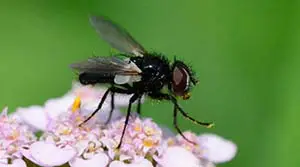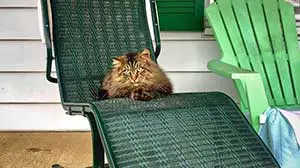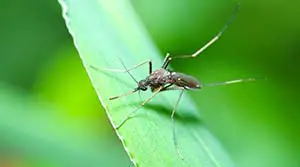
Your pet cats are beloved members of the family, even though feral cats are not. But no matter how you feel about the felines in your life, you need to keep them out of your kids’ sandbox.
Your cats or the wild ones may view your children’s sandbox as a litter box, and they will pee and poo in it. Then your kids will play in the sand with cat droppings, which is not something you even want to think about.
Here are 12 best ways that can get your cats hanging around your kids’ sandbox:
- Get enough litter boxes
- Clean your pet’s litter box
- Consult your local vet
- Change your cat’s litter box location
- Keep your cat indoors
- Cover the kid’s sandbox
- Install Fencing
- Install motion-sensitive water sprays
- Apply spray or plant scented repellants
- Retrain your cat
- Irritate your cat away using a cat-repelling ultrasound device
- Call in professionals
Cats are tricky animals to handle because they are intelligent and excellent climbers. So, it would help if you outsmarted them when implementing any strategies to keep them out of the sandbox.
This article discusses in detail why cats must stay out of your sandbox at all costs and the ways you can keep them out of your children’s play area.
Why You Should Keep Cats Out of Your Kids’ Sandbox
Your cats must urinate and poop somewhere, usually in litter boxes or outdoors. But they may also get infected by ticks and fleas. Their invasion of the kids’ sandboxes poses several problems for these reasons.

1. Cats May Turn the Sandbox into a Stinky Litter Box
Would you allow your kids to play in a cat’s litter box? Of course not! But your children may unwittingly play in a cat’s litter box if the cat turns the sandbox into one.
A typical cat usually poops an average of once a day and urinates twice or thrice within that same period. There is nothing wrong with that, provided the cat does its business in the correct place.
However, if the cat uses your kids’ sandbox, it may take time for you to know what is going on. You may only find out what the cat has done when the sandbox starts to stink or the sand looks and feels icky.
To make matters worse, your children may have already played with the cat poop within the box by that time and even put contaminated sand or toys in their mouths.

2. Your Kids Could Become Infested with Fleas or Ticks
Cats are fastidious groomers that may spend as much as 30% of the time they are awake cleaning themselves up. As a result, they are not as likely as dogs to get infested with fleas or ticks.
However, they are not entirely immune to these pests. Also, remember that feral cats are more likely to be infested because no one can help eliminate these pests from their bodies.
Both indoor and outdoor cats can still get fleas. Signs of flea infestation include excessive grooming, head-scratching, hair loss, and an excessive number of hairballs, among other things.
Unfortunately, if fleas are around your cat or the sandbox, they are likely to bite your children at some point. Your kids may even develop allergic reactions from the bites.
Just like fleas, ticks are more likely to be found on your children if your family cat has them.
Red dots and rashes, mostly on your children’s ankles and wrists, are some of the significant signs of that infestation.

3. Your Kids Could Become Sick
Flea and tick bites are a nuisance. But the skin irritation they cause is not the only thing you should worry about. If an ill cat makes itself at home in your children’s sandbox and leaves behind droppings, fleas, and ticks, your children could get very sick from some of the diseases the cat has.
Both fleas and ticks transmit multiple illnesses from cats to humans. If your cat is ill, has fleas, and invades your kids’ sandbox, it may infect your children with diseases like murine typhus, cat scratch disease, and tapeworms.
Rabies in cats is also a cause for concern. In particular, feral cats may have the disease and pass it through bites, scratches, and saliva if they get it from wild animals like raccoons, skunks, and foxes.
Reasons Why Cats Are Using Your Kids’ Sandbox
Suppose you provide a litter box for your cats, yet they still use your children’s sandbox for similar purposes or play. In that case, you need to investigate why—the reason why will enable you to address the situation and keep the cats away from the sandbox.
Below are some of the reasons why your cats could be using your kids’ sandbox.
1. The Existing Litter Box is Dirty
Ideally, it would help if you cleaned a cat’s litter box every day. In addition, you should change the litter within the container at least once a week.
Since cats are fastidious animals, if their litter box is dirty, that could be the reason they start using your kids’ sandbox instead.
2. The Feline Pets Exceed the Number of Litter Boxes
If the number of litter boxes in your home is less than the number of cats, those pets that experience bullying or are late to do their business may opt for someplace else. That alternative place could be your children’s sandbox, which is currently “unclaimed” by other cats.
3. Your Cat Could Be Sick
Sick cats tend to behave differently. As a result, they may stop using their regular litter box and start using your children’s sandbox instead.
For example, if your cat has a urinary tract infection, it may associate the litter box with pain. So, it may end up going to the toilet in the sandbox instead.
Alternatively, your cat may have an illness that causes them to have minimal control over their bodily functions. In that case, if they like to stay outdoors, the sandbox may provide a more comfortable environment for them when they feel the urge to poop or pee.
4. The Litter Box is in a Public Place
The location of your cat could also be an issue. Generally, the feline creatures of that kind prefer doing their toilet business privately, just like humans.
Therefore, if your cat’s litter box is in a public area and your children’s sandbox is in a more private space, it could be the reason why the latter becomes a more preferred toilet area for your cat.
The sandbox provides them with a place to poop and pee privately without people or stuff startling them or posing a danger to them.
Ways to Keep Cats Out Of Your Kids’ Sandbox
The approach you use to ensure your feline pets stay out of your children’s play area depends on why they are there in the first place. So, choose your strategy wisely.
1. Get Enough Litter Boxes
Start by determining whether you have enough litter boxes if you have several feline pets in the home.
The general rule is to have N+1 litter boxes if you have several cats, where N=the number of cats. For example, if you have five cats, you should have at least six litter boxes.
Having more litter boxes than cats enables each cat to have a place they can claim to do their business. It ensures that these creatures can all be comfortable without looking for toilet alternatives.
2. Clean Your Pet’s Litter Box
Bearing in mind how clean your cat is, you must ensure it has a comfortable litter box for its everyday use.
When cleaning a cat’s litter box, use soap and water while avoiding harsh chemicals. And ensure you are wearing protective clothing like gloves and a dust mask when doing so. Also, it would help if you put in the kind of litter your cat loves and remove the litter box clumps every day.
3. Consult Your Local Vet
If you have enough litter boxes and you keep them clean, yet your cat is using the kids’ sandbox, you may want to consult a vet to check your pet out.
If your cat has a medical problem that causes inappropriate soiling, the vet will recommend the best treatment option. These diseases include urinary tract infections, bladder stones, and constipation.
However, if your pet gets a clean bill of health, you will know you have a behavioral issue that may need sorting out.
4. Change Your Cat’s Litter Box Location
Consider the litter box location Ii your cat continues to use the children’s sandbox despite having access to a clean litter box and having no medical issues. Is it in a public area with high traffic? Perhaps, it is time to change that.
An ideal place to put your cat’s litter box is one that:
- Is quiet
- Easy to reach
- Spacious
- Dry
- Sheltered or private
- Has minimal traffic
- Clean
If the current cat litter box location does not meet the above standards, you should relocate the litter box.
5. Keep Your Cat Indoors
If your cat keeps getting into your kids’ sandbox, the odds are pretty high that it is an outdoor cat. So, you may want to start keeping it indoors.
Converting an outdoor cat into an indoor one is possible, provided you give the cat the things that make it happy. So, you can install cat climbing trees or a perch, buy cat toys, and put it on a leash, and walk it outdoors regularly to maintain that happiness.
If your cat remains indoors, it is unlikely to interfere with your kids’ sandbox and their playtime.
6. Cover the Kids’ Sandbox
Covering the children’s sandbox is something you can do if keeping your family pet indoors all the time is not an option.
Plenty of cat-proof sandbox covers exist. Some are made of wood or mesh, while others are made of a waterproof tarp. In addition, some are height adjustable, while others require manual removal and placement.
Others are even convertible, and you can turn them into benches for your children to sit on when playing.
7. Install Fencing to Protect the Sandbox Area
Suppose you have an outdoor cat that you need to keep out of the sandbox area or wild cats invading your outdoor space.
In that case, it would be best if you fenced the sandbox or entire yard to keep them out of your children’s play areas. But cats are excellent climbers, so your fencing needs to be cat-proof.
A cat-proof fence is one that the cats cannot climb or go through or under. So, it must be at least 1.8 meters high to prevent the cats from jumping over.
It should also have an overhang of about 0.5 meters to provide a more considerable drop for any cat that manages to make it up the fence.
Also, wire mesh fencing is much better because it is not as rigid as a wooden fence. The latter makes it easier for cats to climb over.
So, where you use the mesh, the spacing should be 2.5 inches or less to prevent the tinier cats from squeezing through.
An excellent example of a cat-proof fence is one adapted from coyote rollers. Cats can neither climb over them nor get a good grip. The moment they try to get onto the fencing, the rollers will keep spinning, and the cats will keep falling.
8. Install Motion-Sensitive Water Sprayers
It’s common knowledge that many domestic cats hate water. These feline pets would prefer to stay as far away from it as possible. So, what better way to keep them out of your kids’ sandbox than to use water as a deterrent?
A motion-sensitive cat water sprayer is the best option. When cats move within a specified distance in your yard or near the kid’s sandbox, the sensor will activate the sprayer. And the system will direct bursts of water in the cat’s direction.
It is also worth noting that many water sprayers also emit noises, which startle and scare the cat away.
9. Apply, Spray, or Plant Scented Cat Repellants
Cats tend to hate certain smells. So, if you spray or apply repellants with these smells onto your children’s sandbox, these feline creatures are likely to stay off.
However, it would help to remember that these repellants will lose their strength over time when exposed to the elements.
Also, some repellents are not animal-safe, so think about your cats’ safety when buying or making them. For that reason, think about planting natural repellents to get the desired results.
A garlic and onion spray is easy to make. All you need is two cups of hot water, two garlic bulbs, and an onion. Blend them, strain them, and voila! Ensure that the spray dries before letting your children and pets anywhere near the sandbox.
Cats also hate the smell of citrus fruits. So leaving citrus peels of fruits like lime, lemon, and orange all around the sandbox or in it may be an excellent way of keeping them from that area.
What Scents Do Cats Hate?
- Pine trees
- Lemon thyme
- Pennyroyal
- Lavender
- Rue
- Brewed coffee grounds
- Pepper
- Eucalyptus
- Banana
Some commercial repellants mimic the smell of cat predator urine. So, applying or spraying them onto your sandbox or the vicinity may scare the cat into thinking their predators, such as foxes and coyotes, are around.
10. Retrain Your Cat
If your cat has an accessible and clean litter box and has no health issues, it might have a behavioral problem you need to address if it keeps invading your kids’ sandbox. So, it would be best to retrain it into using the correct place.
Clicker training is one such way to retrain your cat. It involves using positive reinforcement, such as a cat treat and clicks, to change your cat’s behavior.
So, if you do not want your feline pet to stay in the kids’ sandbox, you can retrain it into using its litter box and reward it with treats every time it does that.
11. Irritate Your Cat Away Using a Cat-Repelling Ultrasonic Device
Some sounds are audible to cats and yet inaudible to human beings. If you can generate these sounds, you could find ways to irritate the cats hanging about your kids’ sandbox and keep them away. And that is where the cat-repellant ultrasonic device comes in.
You could install the cat-repellant ultrasonic device in your yard, near the children’s sandbox. When the cat enters the protected infrared field area, the machine emits a high-frequency sound that cats find irritating. So, they will leave that area to get away from the irritation.
12. Call in the Professionals
It is a manageable task to handle your cats and keep them out of your kids’ sandbox. You cannot say the same thing of feral cats carrying dangerous diseases like rabies. So, if you have a wild cat issue, calling in the professionals is the wisest course of action.
Professional cat removal services will enable you to enjoy a feral cat-free existence without worrying about what is going on in your children’s sandbox.
They can even trap, neuter, and return the feral cats if you do not mind having them on your property. Alternatively, they can trap and permanently remove the cats.
The best thing about it is that they have the relevant experience and knowledge you need to get rid of the cats safely and humanely.
Final Thoughts
Cats make excellent pets. And even if they are feral, they could be a fascinating source of entertainment.
However, your ability to enjoy their presence in your life and the life of your loved ones depends partly on whether they can stay out of your kids’ sandbox, where they pose a health threat.
So, it would be wise to implement as many strategies as it takes to keep them away from your children’s play area.
Sources














